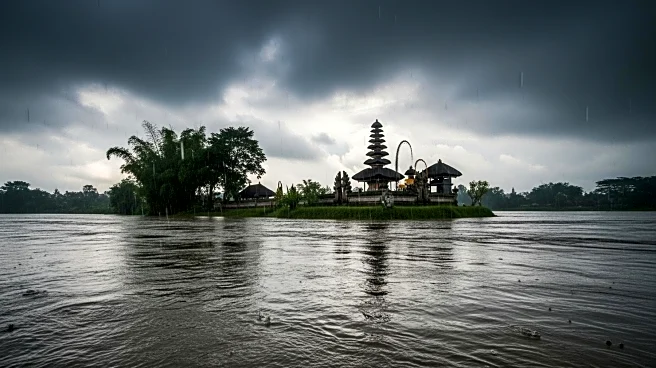What is the story about?
What's Happening?
A magnitude-6.1 earthquake struck Indonesia's easternmost region of Papua, causing scattered damage in the coastal town of Nabire. The earthquake led to the collapse of at least two houses and the main bridge in Nabire, while a government office, a church, and an airport sustained minor damage. The National Disaster Mitigation Agency reported no immediate casualties, and the situation is considered under control. The U.S. Geological Survey noted the quake's epicenter was 28 kilometers south of Nabire at a depth of 10 kilometers. Despite the damage, Indonesia's Meteorology, Climatology, and Geophysical Agency confirmed there was no tsunami threat as the earthquake was centered inland.
Why It's Important?
Indonesia is located on major seismic faults, making it prone to frequent earthquakes and volcanic eruptions. The recent earthquake highlights the ongoing vulnerability of the region to natural disasters, which can have significant impacts on infrastructure and local communities. The event underscores the importance of disaster preparedness and resilient infrastructure in mitigating the effects of such natural occurrences. The absence of casualties is a positive outcome, but the damage to essential structures like bridges and communication networks can disrupt daily life and economic activities in affected areas.
What's Next?
Efforts will likely focus on assessing the full extent of the damage and initiating repairs to restore infrastructure and services in Nabire. Authorities may also review and enhance disaster preparedness measures to better protect communities in future seismic events. The incident may prompt discussions on improving building codes and emergency response strategies to minimize the impact of earthquakes in Indonesia.
AI Generated Content
Do you find this article useful?















